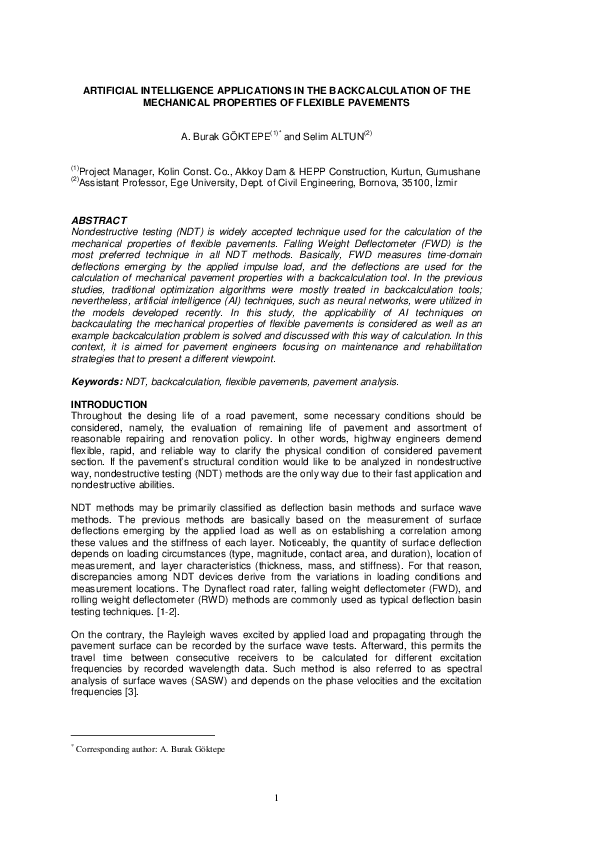


The Mechanistic-Empirical Pavement Design Guide and other existing pavement design guides use elastic modulus ( E) as the primary input parameter for subgrades. More accurate estimation of modulus can save maintenance cost in the future. Moduli of back-calculation using LEM and VEM methods were used to perform flexible pavement analysis, which showed that with an 8% reduction of modulus, the pavement service life reduced by 25%. However, for stiffer soil, the average error of back-calculation using the LEM and VEM method was 12.4% and 4.3%, respectively. In the case of low stiffness soil, the average error of back-calculation using the LEM and VEM was 53.1% and 14.8%, respectively. The back-calculated modulus using the LEM and VEM was higher than that using the PLT. In situ test results showed that a time lag existed between the peaks of deflection and load, and load-deflection curves were nonlinear, which indicated the viscoelastic nature of the soil. The effectiveness of the proposed method was verified with the in situ plate load test (PLT) conducted on a highway embankment. The back-calculation program was compiled with MATLAB. A quasi-static dynamic analysis technique of Laplace transformation and a modified Gauss–Newton optimization algorithm were adopted in the proposed method.

Astm backcalculation portable#
To improve the accuracy of back-calculation of soil modulus using the portable falling weight deflectometer (PFWD), a viscoelastic method (VEM) overcoming the limitations of the conventional linear elastic method (LEM) was proposed.


 0 kommentar(er)
0 kommentar(er)
